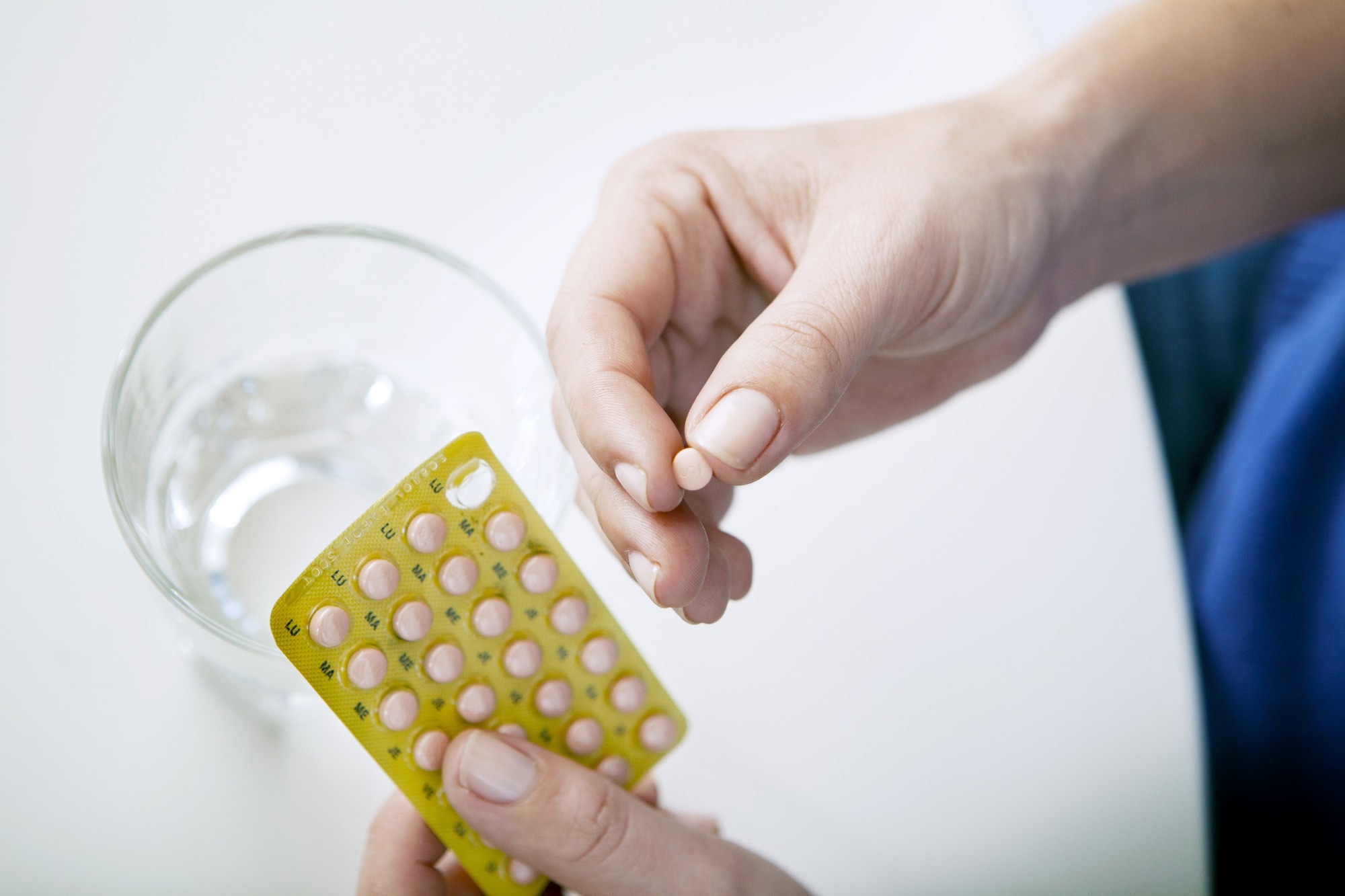Report on a Novel Hormonal Link to Chronic Diarrhea and its Implications for Sustainable Development Goals
Executive Summary
A study led by the University of Cambridge has identified elevated levels of the gut hormone Insulin-Like Peptide 5 (INSL5) as a significant factor in chronic diarrhea conditions, including bile acid diarrhea (BAD) and a substantial subset of Irritable Bowel Syndrome with Diarrhea (IBS-D). This research has profound implications for achieving key United Nations Sustainable Development Goals (SDGs), particularly in health, innovation, and global partnerships.
Advancements Toward SDG 3: Good Health and Well-being
The study’s findings directly support the objectives of SDG 3, which aims to ensure healthy lives and promote well-being for all at all ages by improving the diagnosis and treatment of debilitating non-communicable conditions.
Key Medical Findings
- High levels of the hormone INSL5 are strongly correlated with chronic diarrhea.
- INSL5 is released by cells in the colon in response to irritation from bile acids, which are not properly re-absorbed in individuals with bile acid malabsorption.
- Elevated INSL5 may account for up to 40% of IBS-D cases, a condition that is often misdiagnosed.
- The anti-sickness medication ondansetron has shown efficacy in patients with high INSL5 levels, suggesting a new therapeutic pathway.
Contribution to SDG 3 Targets
- Improved Diagnostics (Target 3.4, 3.8): The development of a new antibody test to measure INSL5 paves the way for a routine clinical blood test. This would improve the diagnosis of BAD, a frequently misunderstood condition, thereby reducing the burden of non-communicable diseases and enhancing access to quality healthcare services.
- Enhanced Treatment and Well-being (Target 3.4): The identification of INSL5 as a therapeutic target and the potential repurposing of ondansetron offer new treatment avenues. Effective management of chronic diarrhea, which can cause urgent and watery stools and risk of incontinence, significantly improves patient quality of life and overall well-being.
- Addressing Non-Communicable Conditions (Target 3.3): By providing a clear biological basis for a subset of chronic diarrhea cases, this research aids in the fight against debilitating non-communicable conditions that affect a significant portion of the population, with an estimated one in three IBS patients with diarrhea having undiagnosed BAD.
Fostering SDG 9: Industry, Innovation, and Infrastructure
The research exemplifies the principles of SDG 9 by enhancing scientific research and upgrading technological capabilities through innovative approaches.
- Technological Innovation: The creation of a novel antibody test by pharmaceutical partner Eli Lilly was critical to measuring the minute quantities of INSL5, representing a significant technological advancement in diagnostics.
- Scientific Research Enhancement: The study provides a new framework for understanding gut health, shifting focus toward the role of gut hormones, which have been comparatively neglected next to the microbiome.
- Innovative Therapeutic Approaches: The investigation into repurposing ondansetron demonstrates an innovative and efficient pathway to developing new treatments by leveraging existing, approved medications, potentially offering a more effective solution than current treatments like bile acid sequestrants.
Strengthening SDG 17: Partnerships for the Goals
This scientific breakthrough was made possible through a multi-stakeholder partnership, a core principle of SDG 17 for achieving sustainable development.
- Public-Private Collaboration: The project involved a successful partnership between academic institutions (University of Cambridge, University of Adelaide, Imperial College London, University of Nottingham) and the private sector (pharmaceutical company Eli Lilly).
- Multi-Institutional Cooperation: Data and samples were shared between multiple research centers, demonstrating effective collaboration within the scientific community to achieve a common health goal.
- Consolidated Funding: The research was supported by a coalition of funding bodies, including the Medical Research Council, Wellcome, and the National Institute for Health and Care Research (NIHR), highlighting a robust resourcing strategy for impactful health research.
SDGs Addressed in the Article
SDG 3: Good Health and Well-being
- The article focuses on improving the health and well-being of individuals suffering from chronic diarrhea, specifically bile acid diarrhea (BAD) and irritable bowel syndrome with diarrhea (IBS-D). It addresses the diagnosis and treatment of these non-communicable diseases, which affect a significant portion of the population, with the article stating that “around one person in every 100 is affected by a condition known as bile acid diarrhea” and “as many as one in 20 people is thought to have IBS.”
SDG 9: Industry, Innovation and Infrastructure
- The core of the article is the discussion of scientific research and innovation. It highlights a new study led by the University of Cambridge, the development of a “new antibody test developed by pharmaceutical company Eli Lilly,” and the potential for new treatments. This directly relates to enhancing scientific research and upgrading technological capabilities to solve health problems.
SDG 17: Partnerships for the Goals
- The research described in the article is a result of multiple collaborations. It mentions partnerships between several academic institutions (University of Cambridge, University of Adelaide, Imperial College London, University of Nottingham) and a private sector entity (“pharmaceutical company Eli Lilly”). This multi-stakeholder collaboration to share knowledge and resources is a key aspect of SDG 17.
Identified SDG Targets
Targets under SDG 3: Good Health and Well-being
-
Target 3.4: By 2030, reduce by one third premature mortality from non-communicable diseases through prevention and treatment and promote mental health and well-being.
- The research aims to improve the treatment of chronic conditions like BAD and IBS-D. The article notes that current treatments are “only effective in around two-thirds of patients,” and the new findings could lead to repurposing drugs or developing “even better treatments,” thereby improving the well-being of those with these non-communicable diseases.
-
Target 3.d: Strengthen the capacity of all countries… for early warning, risk reduction and management of national and global health risks.
- The article highlights the difficulty in diagnosing BAD, leading to misdiagnosis. The research on the hormone INSL5 “might allow us to develop a blood test to help diagnose bile acid diarrhea,” which would significantly strengthen the capacity for early and accurate diagnosis and management of this health condition.
Target under SDG 9: Industry, Innovation and Infrastructure
-
Target 9.5: Enhance scientific research, upgrade the technological capabilities of industrial sectors in all countries… including… encouraging innovation and substantially increasing the number of research and development workers… and public and private research and development spending.
- The entire article is a testament to this target. It describes a scientific study published in the journal Gut, funded by the “Medical Research Council and Wellcome,” and involving collaboration between universities and a private company. This represents an investment in and enhancement of scientific research to drive innovation in healthcare.
Targets under SDG 17: Partnerships for the Goals
-
Target 17.16: Enhance the Global Partnership for Sustainable Development, complemented by multi-stakeholder partnerships that mobilize and share knowledge, expertise, technology and financial resources.
- The study involved a network of researchers and institutions sharing knowledge and samples. The Cambridge team analyzed samples from a study at the “University of Adelaide,” from “Professor Julian Walters at Imperial College London,” and from “Professor Robin Spiller at the University of Nottingham,” demonstrating a partnership that mobilizes and shares expertise and resources.
-
Target 17.17: Encourage and promote effective public, public-private and civil society partnerships.
- The research was made possible by a public-private partnership. The article explicitly states that the team is “collaborating” with the “pharmaceutical company Eli Lilly,” which developed the new antibody test essential for the study. This is a clear example of a partnership between public research institutions and a private company.
Implied Indicators for Measuring Progress
Indicators for SDG 3
- Prevalence of misdiagnosed or ineffectively treated non-communicable diseases: The article implies this indicator by stating that “an estimated one in three patients with diarrhea as their main symptom have undiagnosed bile acid diarrhea” and that current treatments are not universally effective. Progress would be a reduction in these numbers.
- Availability of new diagnostic tests and treatments: The potential to “develop a blood test to help diagnose bile acid diarrhea” and to repurpose ondansetron or “develop even better treatments” serves as a direct indicator. The development and adoption of these tools would measure progress towards Target 3.d.
Indicator for SDG 9
- Investment in health-related research and development (R&D): The article mentions that “The research was supported by the Medical Research Council and Wellcome.” The level of public and private funding for such research and the number of resulting scientific publications (like the one in the journal Gut) are indicators of progress in enhancing scientific research.
Indicator for SDG 17
- Number of public-private partnerships in scientific research: The collaboration between the University of Cambridge and “pharmaceutical company Eli Lilly” is a specific example. Tracking the number and effectiveness of such partnerships in the health sector would be an indicator of progress.
Summary Table of SDGs, Targets, and Indicators
| SDGs | Targets | Indicators (Mentioned or Implied in the Article) |
|---|---|---|
| SDG 3: Good Health and Well-being |
3.4: Reduce impact of non-communicable diseases and promote well-being.
3.d: Strengthen capacity for early warning and management of health risks. |
– Prevalence of undiagnosed/untreated bile acid diarrhea and IBS-D. – Effectiveness rate of available treatments. – Development and availability of a new blood test for diagnosis. – Development of new or repurposed treatments. |
| SDG 9: Industry, Innovation and Infrastructure | 9.5: Enhance scientific research and encourage innovation. |
– Number of scientific publications on the topic (e.g., the article in Gut). – Amount of public and private R&D spending (e.g., funding from Medical Research Council and Wellcome). – Development of new technologies (e.g., the antibody test by Eli Lilly). |
| SDG 17: Partnerships for the Goals |
17.16: Enhance multi-stakeholder partnerships.
17.17: Promote effective public-private partnerships. |
– Number of multi-stakeholder research collaborations (e.g., Cambridge, Adelaide, Imperial, Nottingham). – Number of public-private partnerships for health innovation (e.g., University of Cambridge and Eli Lilly). |
Source: news-medical.net







